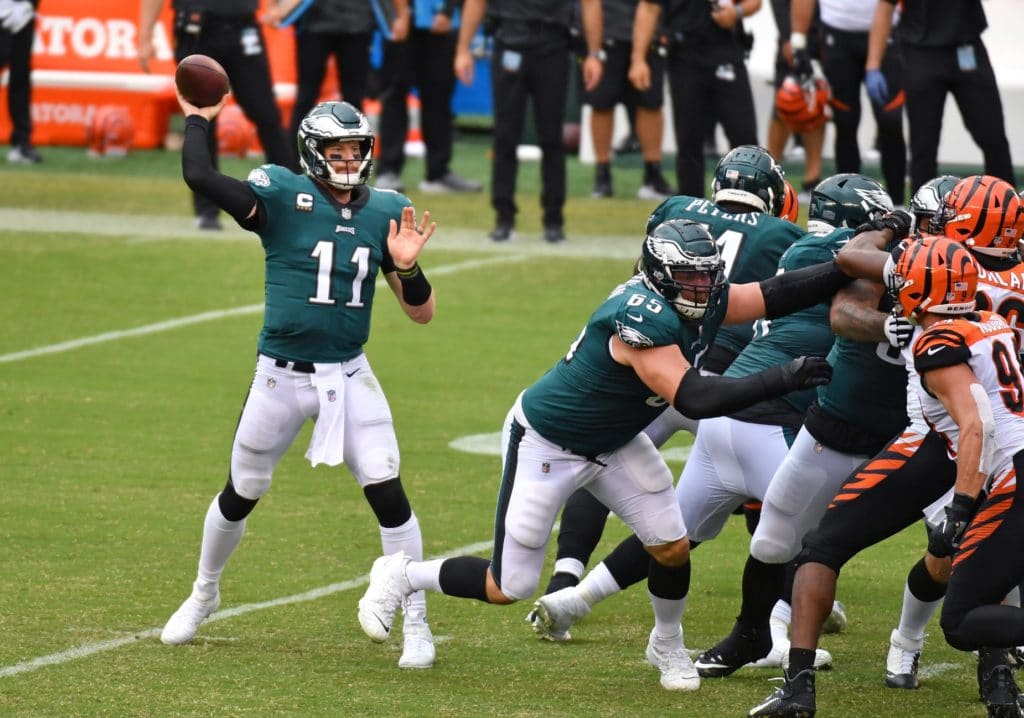Ad Disclosure
NFL Players Association Asking All Teams to Scrap Turf Fields and Convert to Grass

Ever notice how your body recovers more quickly when you play on a grass field instead of artificial turf?
That’s because turf blows. It’s hard on the knees and lower back. You can’t plant, cut, and turn with the same organic motions you would get from digging your cleats into the soft and forgiving ground.
NFL players are more qualified than anyone to speak on the topic, and today the Players Association put out a statement asking for all 32 NFL teams to forever banish their turf fields and commit to grass instead.
“Union president JC Tretter said in a statement on Wednesday that artificial turf is significantly harder on the body than grass.
He cited the NFL’s injury data from 2012-18 that the contact injury rate for lower extremities was higher during practices and games held on turf. And that NFL players experienced a much higher rate of noncontact lower extremity injuries on turf compared to natural surfaces.
He also said that cold-weather teams such as the Packers, Steelers and Browns have natural grass fields. And indoor stadiums in Arizona and Las Vegas have figured out how to have a natural grass playing surface.”
Lincoln Financial Field features a hybrid grass/fiber system known as “Grass Master,” so I’m honestly not sure if the Birds would have to switch to grass-only if the NFL decided to go this route. It’s basically just a grass field with fiber-reinforced stitching. They would, however, benefit from the Giants and Cowboys converting their synthetic turf fields to natural surfaces. The Washington Football Field uses Bermuda grass.
The other NFL teams currently using some sort of turf are the Bills, Seahawks, Lions, Patriots, Colts, Falcons, Saints, Texans, Bengals, Rams, Chargers, and Vikings.
This part of Tretter’s statement is particularly relevant and interesting:
“Professional football players put extremely high levels of force and rotation onto the playing surface. Grass will eventually give, which often releases the cleat prior to reaching an injurious load. On synthetic surfaces, there is less give, meaning our feet, ankles and knees absorb the force, which makes injury more likely to follow.
The data supports the anecdotes you’ll hear from me and other players: artificial turf is significantly harder on the body than grass. Based on NFL injury data collected from 2012 to 2018, not only was the contact injury rate for lower extremities higher during practices and games held on artificial turf, NFL players consistently experienced a much higher rate of non-contact lower extremity injuries on turf compared to natural surfaces. Specifically, players have a 28% higher rate of non-contact lower extremity injuries when playing on artificial turf. Of those non-contact injuries, players have a 32% higher rate of non-contact knee injuries on turf and a staggering 69% higher rate of non-contact foot/ankle injuries on turf compared to grass.”
It’s a big deal. Just think about how ridiculous the Eagles’ injury situation has been in the last half-decade and how much we might improve it by giving them a better surface to play on. And it’s not like they can’t afford it, these professional teams. It’s one thing for the Perkiomen Valley Vikings to install a low-maintenance and flexible-usage turf field, but this is the NFL we’re talking about here, not the Pac 10 up in Montco.
For some context, the only other football team with the Grass Master system is the Green Bay Packers. Most of the organizations using it are foreign soccer and rugby teams, a lot of them up in England and Scotland, where it rains frequently. If they can keep their grass fields in respectable shape, we can figure it out also.
This is the best video I could find explaining the fiber stitching:

Kevin has been writing about Philadelphia sports since 2009. He spent seven years in the CBS 3 sports department and started with the Union during the team's 2010 inaugural season. He went to the academic powerhouses of Boyertown High School and West Virginia University. email - k.kinkead@sportradar.com